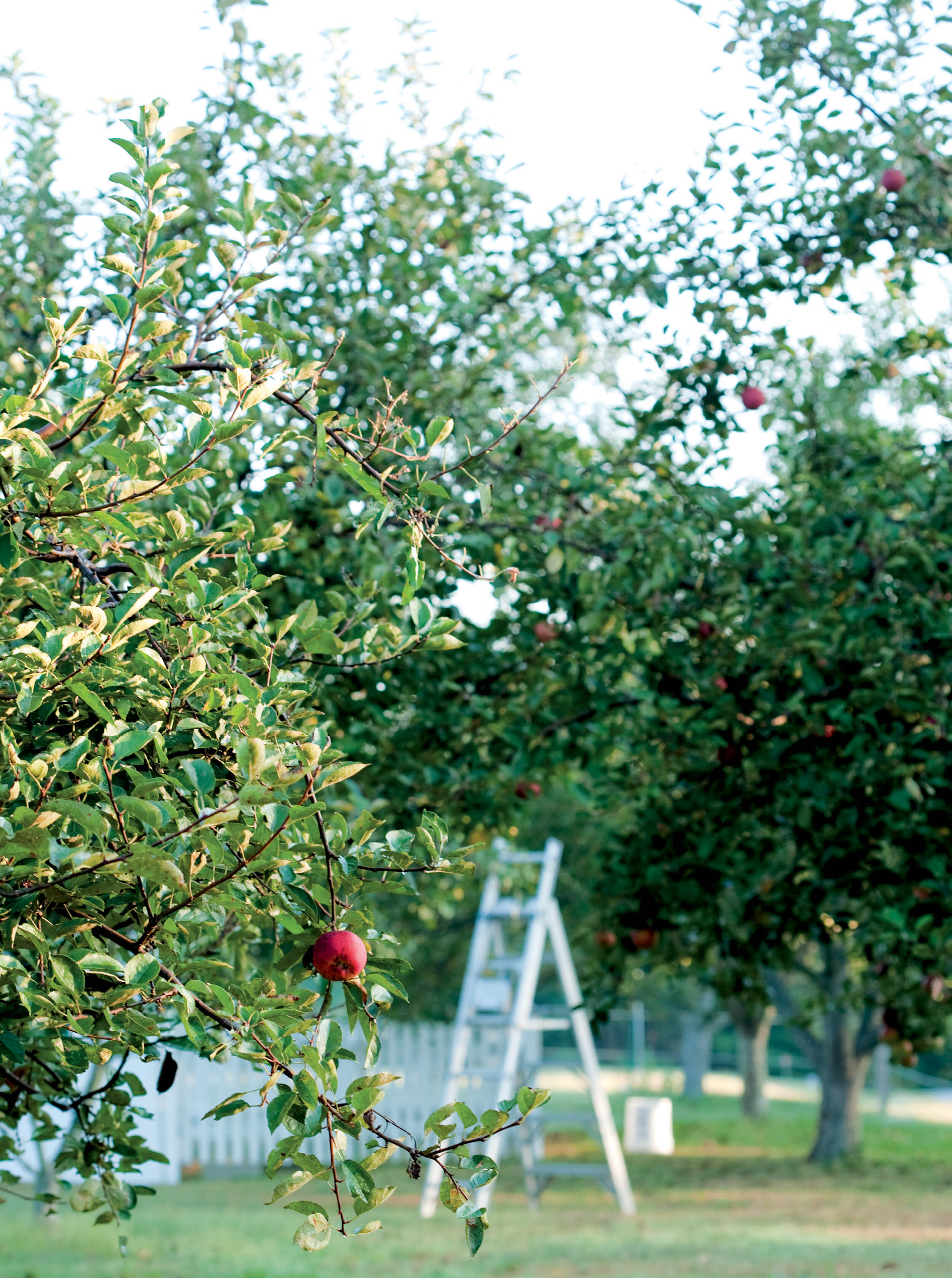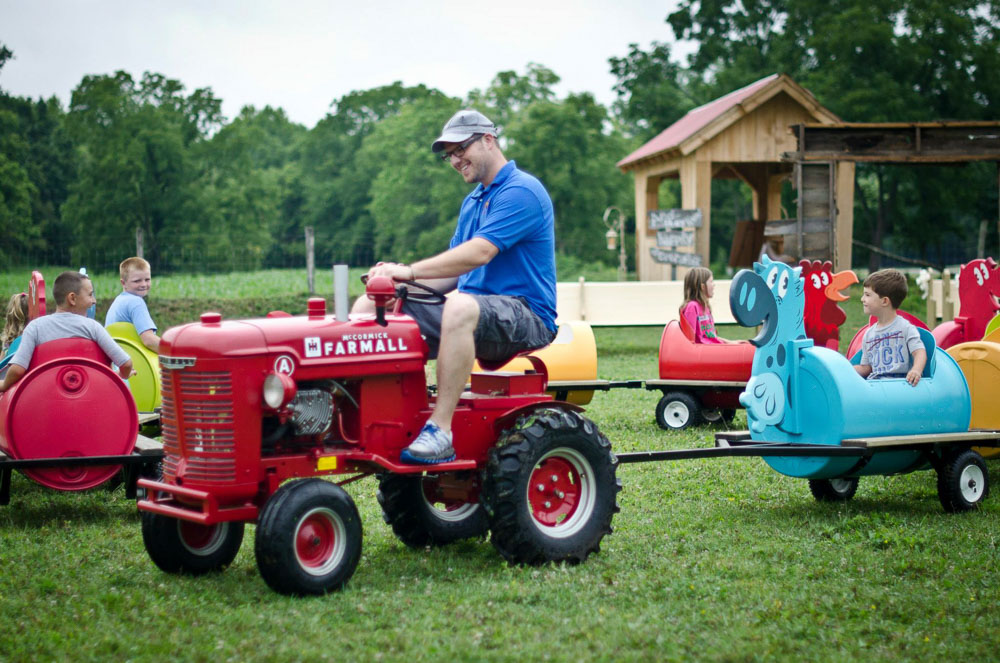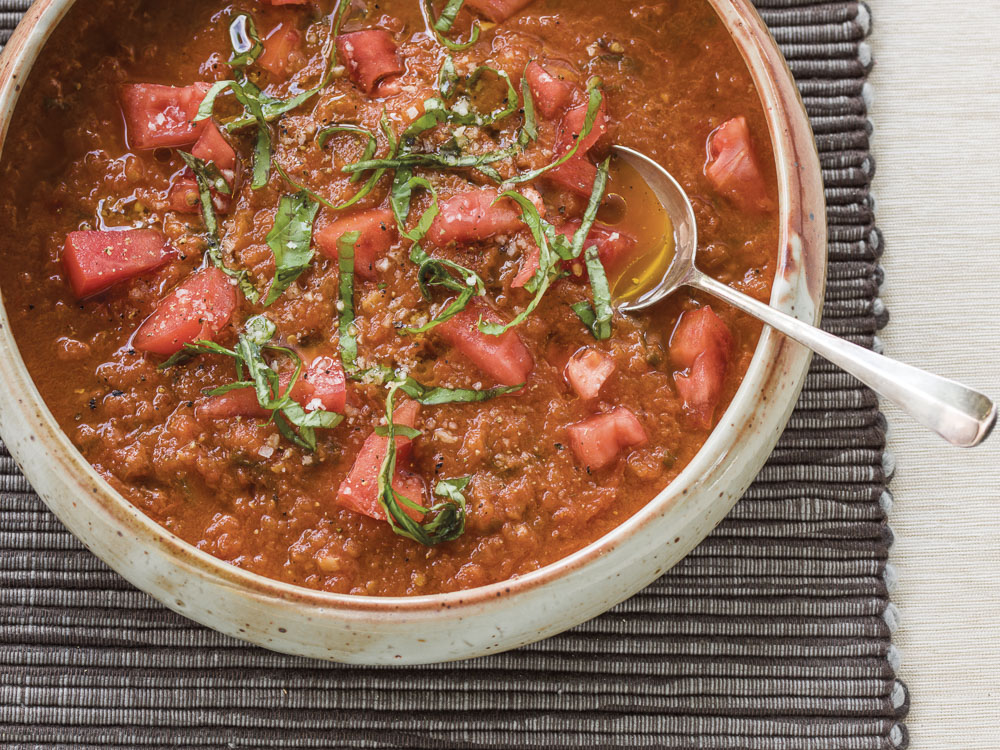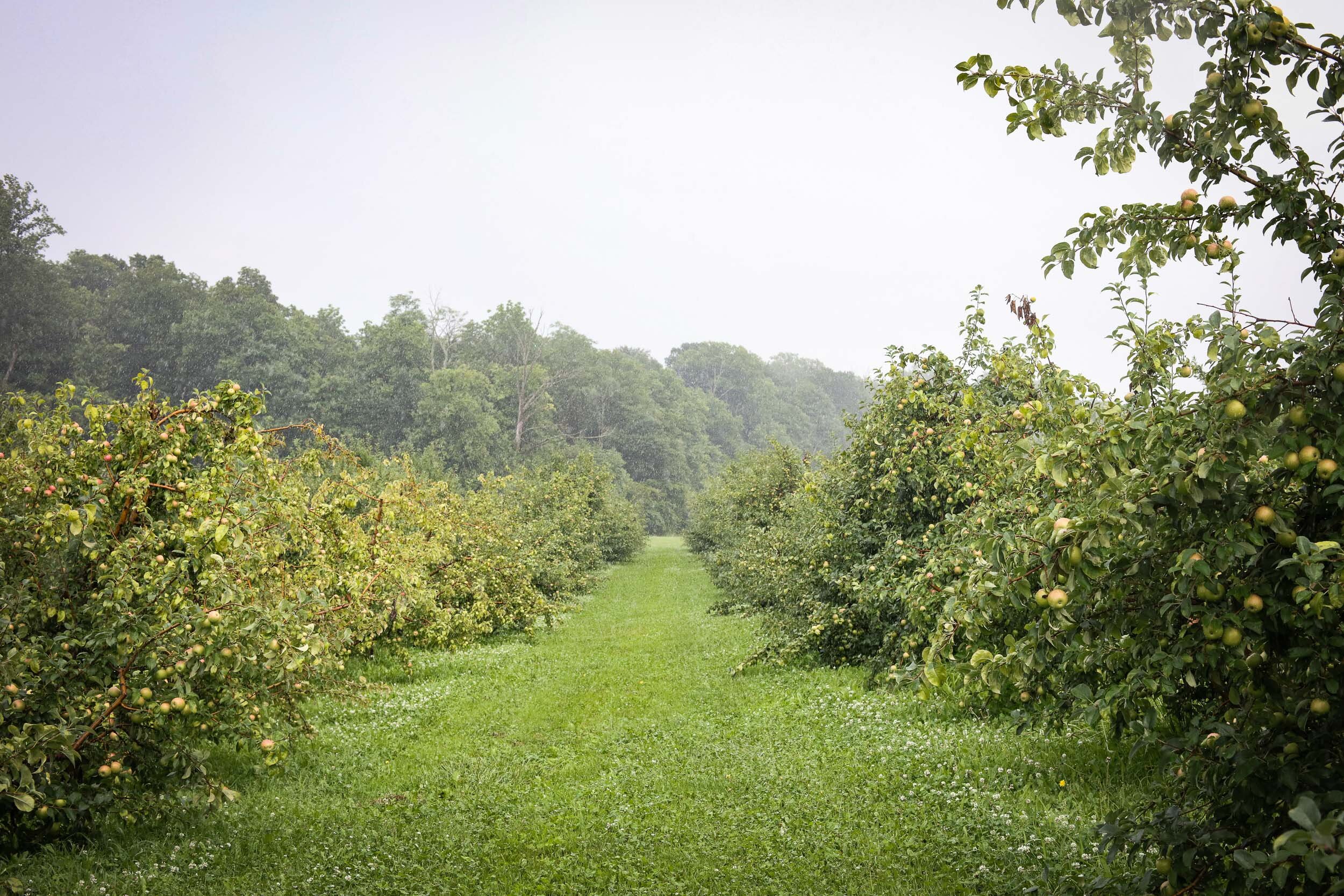Apple Cider

Ohio and Indiana were once the land that John Chapman — better known as Johnny Appleseed — once roamed, so we are no strangers to our region's bounty of apples. However, apples are not a fruit native to this land. They were brought over with colonists (and came from Asia before that) well before the American revolution. With this fruit so ingrained in our history, it really isn't a surprise to learn that there are probably 2,500 different varieties in the United States alone. Mix a few of these varieties to make your own cider.
Marsha and Tim (see images below) make apple cider throughout the apple season with an antique cider mill. Organic apples are relieved of any blemishes and insects and then milled -- core and all. With a small orchard, this process yields earthy, fresh cider that freezes well to use later in the year.
KITCHEN CIDER
You can still make your own cider at home even if you do not have a cider press! If you have a food processor at home, you can still create this classic fall drink.
1. Choose your apples, which could be a mix of different varieties. Cider can be made from both tart and sweet apples; the mix of the varieties can create a more interesting result.
2. After washing all of the apples, core and quarter them (you can leave the skin on). Put the cut apples into your food processor (being careful to mind your processor's overflow limit) and process them until they are pureed.
3. Make sure your cheesecloth is placed over a large bowl. Once the apples are pureed, pour the puree onto the cheesecloth in batches to squeeze out the cider.
4. Once you have squeezed all the cider from the puree, dispose of the remaining pulp (We suggest a compost pile; however, we have heard this pulp is a good weed killer.)
5. Funnel your cider into a container that has an airtight lid. Any excess cider you may not drink right away can be frozen up to one year.
Recently Joy acted on a persistent daydream by converting part of her backyard into a garden for berries and a second garden to build up the soil for vegetables. When she isn’t tending these new gardens, she dabbles in food styling and design for Edible Ohio Valley and volunteers on a local farm.






